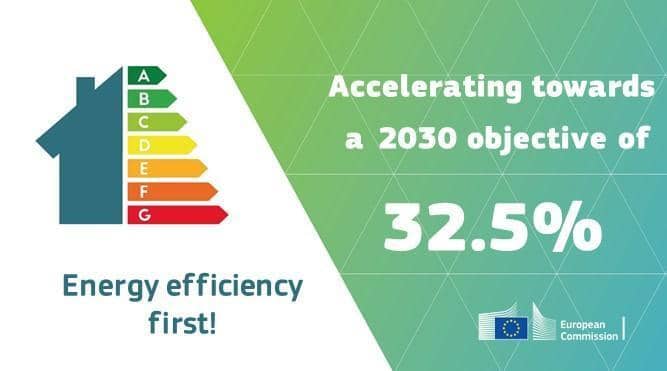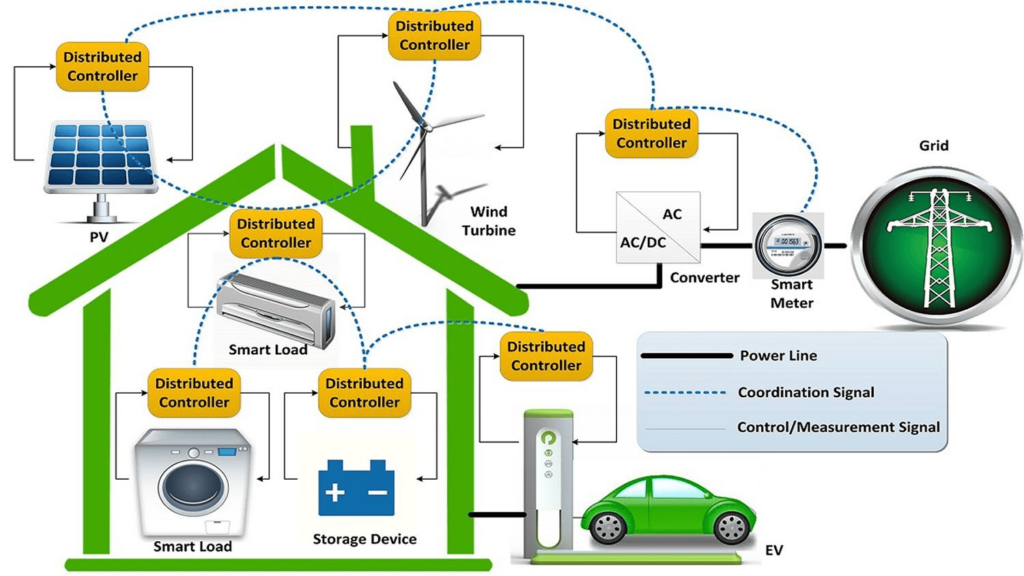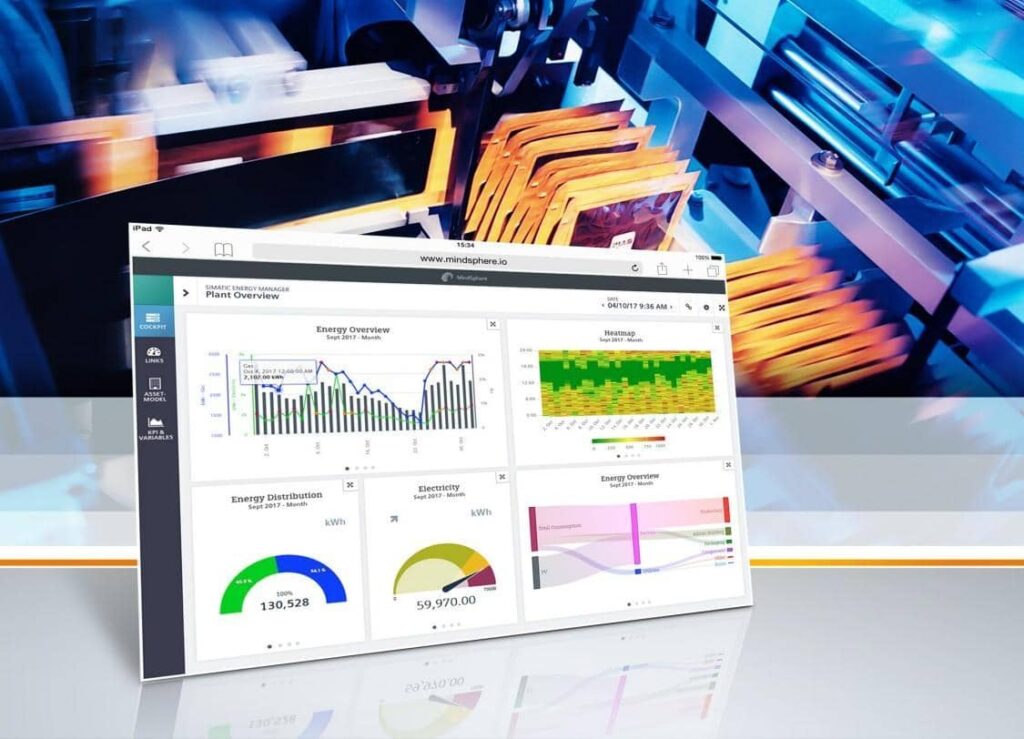Increased Savings with Energy Management Systems: Functions, Benefits, and Industry Trends
Innovative systems help companies to boost energy management savings. We’ll tell you about EMSs, their benefits, and the latest trends in this sector.

Companies around the world are trying to use resources efficiently, including energy. On the one hand, such an attitude serves a business purpose and saves money. On the other hand, it propels environmental stewardship and helps to protect our planet. Robust energy management software is a must for modern enterprises. It allows for quality monitoring of power consumption and minimizing its harmful impact on nature.
This concern is global and supported on the governmental level. Thus, the European Union has set a goal of reducing consumption by at least 32.5% by 2030. This means that companies must use resources sparingly and search for alternative ways of powering facilities. Individuals should show maximum awareness of this issue in their private households and achieve the best possible savings through reasonable energy management.
In this article

Let’s talk about the key trends in energy management.
Energy saving trends
Enterprises, SMEs, and startups willing to contribute to the common cause are trying to adopt the following practices:
Improving the efficiency of buildings
Buildings consume about 40 percent of the EU’s energy. This factor must be taken into account when building new houses and facilities. For example, engineers can calculate the best orientation in relation to the most powerful source – the Sun, so that dwellers can enjoy natural light as long as possible. They should also foresee what kind of interior layout serves the purpose the most and implement other energy-saving features. Among them are proper insulation, state-of-the-art ventilation systems, special windows and doors, innovative shading devices, appliances regulating the temperature, and other ways of reducing artificial heating or cooling.
As for old buildings, professionals should reconstruct them in such a way as to reduce power consumption. When modernizing these houses, engineers must pay great attention to existing lighting, hearing, and cooling methods to introduce the necessary changes. By doing so, we can not only contribute to a greener future but also reap the benefits of reduced operational costs, ultimately aligning with the importance of securing the best business electric prices for a more sustainable and economically viable future.
Building professionals must cooperate with policymakers to introduce new standards of quality. People must consult the best experts when equipping their flats, houses, and other premises.

Introducing renewable sources in as many facilities as possible
Conventional sources produce harmful effects, and it’s one of the global concerns today. Numerous businesses are trying to reduce their carbon footprint. And introducing best practices into building management is a sound idea.
This energy-saving trend is gaining momentum as more and more houses are being equipped with solar panels. Geothermal systems and wind turbines are also efficient ways of reducing conventional consumption to zero. New houses are already being built to comply with governmental directives, and old ones can be retrofitted to gain a greener character.
Not only roofs and facades but also elements of the interior can be modernized. For instance, smart solar blinds developed by SolarGaps are a great invention for urban areas that have limited space and cannot accommodate installations of solar panels. They follow the movement of the sun and automatically change their angle.
Such innovative products take our notions of perfect dwellings to the next level and help to cut expenses.

Introducing eco-friendly systems
Climate change is still a global issue defining the evolution of various sectors, including IT. An efficient way to deal with it is to introduce eco-friendly devices, appliances, and systems. That’s why one more important energy management trend worth mentioning is equipping houses with efficient heating and lighting devices. Among them are state-of-the-art condensing boilers capturing and reusing heat that would otherwise be wasted, fluorescent or LED lamps cutting consumption by more than 50%, etc. It’s of vital importance to encourage consumers to buy household appliances with appropriate capacities. Smart home technology with simple control of consumption helps people to significantly reduce bills.
Users should avoid both overcapacity and under-capacity in appliances. They should keep a watchful eye on the latest inventions and buy those devices that use resources least of all.
Recycling waste
This is perhaps one of the most striking energy-saving trends. IT companies developing innovative energy saving software in cooperation with leading manufacturers create impressive products that run according to this principle. For example, HomeBiogas offers individuals a compact digester to convert organic waste into clean energy. 2 kg is enough to generate gas for a 2-hour cooking activity. This solution has already greatly contributed to environmental protection, with 526,554 saved trees, 58,506 tons of mitigated carbon dioxide, and 6,405,750 cooking hours as of mid-March, 2023. This remarkable product can serve as a paragon for businesses creating products for households.
Another system working on the same principle is HERU. It employs pyrolysis to recycle waste, including plastic. The latter fact is critical as we live in a world where plastic waste is enormous. We still have a long way to go to lower its usage.

Introducing innovative energy-saving software to control processes
This is one of the key energy management trends in a world driven by digitalization. As people are gradually cutting consumption, IT companies develop new efficient tools to help them discover the advantages of energy management. These include such helpful functions as analysis, tracking, automatic setup, remote and mobile control, and more. Let’s dive into more details.
Energy management software: key functions
One might ask, why invest in a system that is meant for cutting expenses? Isn’t it paradoxical? It’s definitely not because you set goals for the future. That’s why leading businesses from various sectors order custom EMSs to streamline their processes. These are to be found at hospitals, hotels, manufacturing facilities, restaurants, and more.
Robust energy management software must be all-purpose and include tools to streamline management tasks. The system must perfectly meet all business goals and respond to the latest trends in the industry. Moreover, it should be created in accordance with the latest sustainability requirements. That’s why this type of product requires governmental control and strict compliance with regulations.
The core peculiarities of an EMS are:
- Setting goals
To achieve greater energy management savings, a team defines clear goals. Humans set tasks, and the system considers the objectives of the company and offers possible improvements. The digital solution uses both historical and current data, assesses trends, and gives valuable insights to employers. What’s more, it helps to evaluate the company’s progress and understand if it has achieved its goals.
- Suggesting various strategies
There are various scenarios to save resources (conservation, storage, etc.), so, the system will analyze all of them considering the business needs and suggest the most appropriate one.
- Data collection
Another feature of energy-saving systems is seamless data collection. Sometimes, one needs to aggregate information from many sources, and a robust platform significantly facilitates this task.
- Consumption measurement
Thanks to reliable verification methods, the system measures usage and informs the owner. Solid tracking capacities are among the most important functions of any EMS.
- Defining energy KPIs
This feature considers the size and other peculiarities of an enterprise. The system must determine the parameters one needs to report on.
- Regular reporting
Accurate reporting is indispensable for organizations. Thus, they will evaluate their progress, detect problem areas, and find ways to improve the situation.
- Visualization
When presented visually, inefficiencies become even more evident. A good system must provide its owners with a solid visualization mechanism showing consumption and other meaningful parameters.
- Robust verification mechanism
An efficient system should ensure that you have achieved the savings you expect as you finish your projects, with the help of solid and trustworthy verification methods.
- Clear UI/UX
Easy navigation and clarity of information are prerequisites to efficient management. When everything is intuitive and simple, specialists can carry out their tasks much more efficiently.

The benefits of energy management solutions
- Real-time monitoring
One of the primary energy management system features is real-time control of consumption. It allows for tracing excessive use, introducing the necessary adjustments, predicting demand, and calculating costs.
- Thorough analysis
By detecting meaningful patterns in usage, companies can figure out what to expect in the future.
- Automation
Automation increases energy management savings and allows people to delegate all the tasks to devices. This means increased convenience and impeccable performance. Most of us have seen houses where lights turn on automatically when a person enters a room. Another scenario is adjusting thermostats or switching off certain devices when there is no one in a building.
- Solid integration capacities
The benefits of energy-saving systems become obvious if these solutions are integrated with building automation tools and other platforms. Thus, employees can see the big picture and coordinate processes for better performance.
- Optimization and useful hints
AI-powered digital products will not only control buildings but also suggest new ways of introducing efficient practices. They can give hints on how to cut demand, adjust schedules, and so on.
- Creating efficient models
A practical solution should be able to simulate different usage scenarios to calculate the most appropriate options and minimize costs.

Considerable savings with energy management tools: some examples
There are numerous digital solutions on the market, and it’s not easy to pick the best one. Let’s take a look at several products that have gained acclaim among businesses worldwide.
- Facilio
This innovative suite allows users to fully discover the benefits of energy saving. Facilio includes all the key peculiarities we have mentioned above (tracking, goal setting, etc.) and many more (heatmaps, HVAC monitoring, predictive diagnostics, fault detection, etc.). It enables the IoT and ML to produce the best possible results and has a special focus on sustainability.
- DEXMA
This cloud-based product allows businesses to get accurate analytics, render data to their clients, and see energy management benefits shortly after adopting the software. With its help, managers monitor consumption patterns, assess prices, and track KPIs to optimize processes. The platform has robust automation mechanisms and numerous useful functions.
- Watchwire
This platform is known for its efficient performance and enhanced customization capacities. One can create individual views for certain use cases. The platform helps businesses operating in the real estate sector manage budgeting, promote sustainability, and cut expenses.
- Strata
This digital product makes data collection and analysis simple and seamless. Perfect visualization helps companies assess their habits, detect inefficiencies, and introduce the necessary changes. You can create maps, set up schedules, and manage load levels in the most efficient way.
- Vitality
This program runs in the cloud and helps enterprises monitor and assess their utility bills, evaluate the level of emissions in premises, and achieve considerable savings with decent energy management. It has impressive schedule optimization functionality and efficient reporting.
- Planetly
This solution with solid energy-saving features was developed with international standards for carbon footprint in mind. It allows companies to calculate and minimize their emissions and thus contribute to a greener future for our planet. It also encourages investing in eco-friendly activities.
- CEnergy
This solution was developed for the manufacturing industry. It controls consumption at plants and factories and helps to streamline operations. Understanding the entire situation at a production facility helps owners to cut downtime and boost efficiency.
- AQue
This platform is AI-powered and employs ML mechanisms to make accurate predictions, reap energy management benefits, control the inventory, and offer efficient models. This cloud-based tool has gained recognition among businesses from different countries.

Conclusion
Innovative digital tools are essential for companies looking to reduce costs and conserve resources. They help optimize power consumption, reduce losses, and find ways to achieve greater efficiency. Increasing savings through Energy Management Systems and understanding Texas power choice is integral to effective energy management, financial savings, and environmental sustainability. These systems and choices empower consumers and businesses to take control of their energy usage and costs, contributing to a more efficient and sustainable energy future.
The demand for such digital platforms will grow as businesses increasingly focus on sustainability. As technology advances, they will become more sophisticated and capable of providing more in-depth insights and more comprehensive solutions to environmental problems.
If your company needs a software platform of this kind, you should find a reliable IT provider. Its experts will research your needs and business objectives and build a perfect tool. With such a platform, you will significantly cut consumption and costs.
FAQ
What is an Energy Management System (EMS)?
An Energy Management System is a software-based solution that helps organizations monitor, control, and optimize their energy consumption and usage patterns.
Why do businesses and organizations use Energy Management Systems?
Organizations use EMS to reduce energy costs, enhance energy efficiency, lower carbon emissions, and ensure compliance with energy regulations.
What are the key components of an Energy Management System?
An EMS typically consists of hardware (sensors, meters), software for data analysis, real-time monitoring, and reporting, and control systems to adjust energy usage.
How does an EMS help in energy efficiency?
EMS collects data on energy consumption, identifies inefficiencies, and suggests improvements like adjusting HVAC settings or optimizing lighting.
Can an EMS be integrated with existing building systems?
Yes, many EMS solutions can integrate with HVAC, lighting, and other building systems to coordinate energy management efforts.
Is energy data visualization a part of an EMS?
Yes, EMS often includes energy data visualization tools, like dashboards and reports, to provide insights and track energy performance.
Can an EMS help businesses achieve sustainability goals?
Absolutely, an EMS helps organizations reduce energy waste and carbon emissions, aligning with sustainability and environmental targets.
Are there benefits for residential users of Energy Management Systems?
Residential EMS can help homeowners monitor energy usage, reduce utility bills, and make more informed decisions about energy-efficient appliances and practices.
What role does real-time monitoring play in an EMS?
Real-time monitoring allows organizations to track energy consumption instantly, enabling rapid response to abnormal energy use.
Is data security a concern with EMS solutions?
Yes, data security is crucial. Reliable EMS providers employ encryption and security measures to protect sensitive energy data and prevent unauthorized access.
Can an Energy Management System (EMS) be customized to meet specific energy goals?
Yes, EMS solutions can be tailored to an organization’s unique energy objectives and requirements.
What types of facilities can benefit from implementing an EMS?
EMS is beneficial for various facilities, including commercial buildings, industrial plants, data centers, and even residential homes.
How do EMS solutions contribute to demand response programs?
EMS can automate load shedding or shifting during peak demand, helping organizations participate in demand response programs and earn incentives.
Are there government incentives or rebates available for implementing EMS solutions?
Many regions offer financial incentives and rebates to encourage the adoption of EMS technologies and energy-efficient practices.
What role does predictive analytics play in an Energy Management System?
Predictive analytics within EMS can forecast energy usage patterns, allowing proactive energy management and cost savings.
Can EMS help track and reduce water consumption along with energy?
Some advanced EMS solutions offer water management capabilities, helping organizations reduce both energy and water usage.
How do cloud-based EMS platforms differ from on-premises systems?
Cloud-based EMS platforms offer remote access, scalability, and easier updates, while on-premises systems provide more control over data security.
Can an EMS integrate with renewable energy sources, such as solar panels or wind turbines?
Yes, EMS can integrate with renewable energy sources to optimize their use and storage, maximizing energy efficiency.
What is the typical return on investment (ROI) for organizations implementing an EMS?
ROI varies depending on factors like energy costs, facility size, and the extent of energy savings measures, but many organizations see significant savings within a few years.
How can organizations get started with implementing an Energy Management System?
To get started, organizations should assess their energy needs, choose a suitable EMS provider, set clear energy goals, and design a customized implementation plan.
What is the role of IoT (Internet of Things) devices in an Energy Management System?
IoT devices, such as smart sensors and meters, collect real-time data on energy consumption and equipment performance, enhancing the accuracy of energy management.
Can an Energy Management System help organizations comply with energy regulations and standards?
Yes, EMS solutions often include compliance features to help organizations adhere to energy efficiency regulations and industry standards.
Are there mobile apps available for monitoring and controlling energy through EMS?
Many EMS providers offer mobile apps, allowing users to monitor and control energy consumption remotely, even while on the go.
How does an EMS help identify energy-saving opportunities and inefficiencies?
EMS analyzes historical data and identifies patterns to pinpoint areas where energy can be saved or where inefficiencies exist.
Can EMS solutions generate reports for stakeholders and decision-makers?
Yes, EMS systems typically offer reporting capabilities to provide stakeholders with insights into energy performance and cost savings.
What are the energy management challenges that EMS can help address in industrial facilities?
EMS can address challenges like equipment optimization, reducing peak demand charges, and ensuring uninterrupted production.
How do EMS solutions assist in reducing greenhouse gas emissions and environmental impact?
By optimizing energy use, EMS contributes to reduced energy consumption and, subsequently, lower carbon emissions and environmental impact.
What role does benchmarking play in an Energy Management System?
Benchmarking allows organizations to compare their energy performance with industry standards and similar facilities, facilitating goal setting and continuous improvement.
Can an EMS help organizations set and achieve energy reduction targets?
Yes, EMS can help set energy reduction targets, track progress, and adjust strategies to meet or exceed those targets.
Are there energy management certifications or standards for EMS providers?
Yes, certifications like ISO 50001 and ENERGY STAR are commonly associated with energy management and efficiency, and EMS providers may adhere to these standards.
Create more and better content
Check out the following resources and Grow!